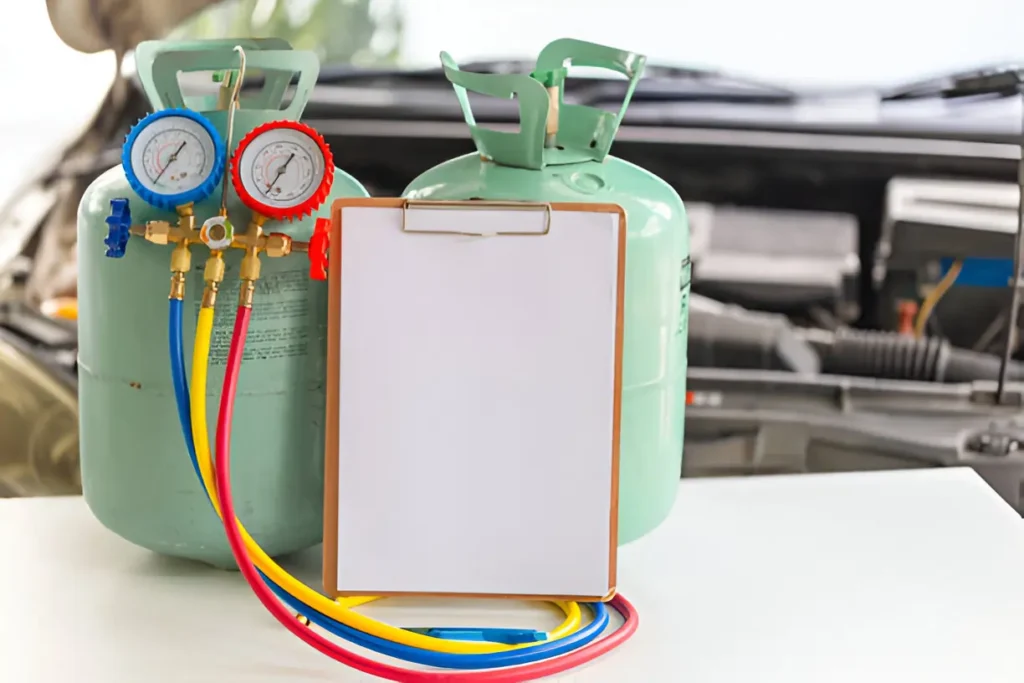The HVAC industry is experiencing its biggest transformation in decades. New refrigerant regulations are reshaping how we cool our homes and businesses, and A2L refrigerants are at the center of this change. If you’re feeling overwhelmed by the technical jargon and regulatory requirements, you’re not alone.
This guide will walk you through everything you need to know about transitioning to A2L refrigerants, from understanding the basics to implementing the right charging systems. By the end, you’ll have a clear roadmap for navigating this industry shift with confidence.
What Are A2L Refrigerants?
A2L refrigerants represent a new class of cooling agents designed to be more environmentally friendly than their predecessors. The “A2L” classification indicates these refrigerants have low toxicity and mild flammability characteristics.
Unlike traditional refrigerants, A2L options have a significantly lower Global Warming Potential (GWP). This means they cause less environmental damage when released into the atmosphere. The trade-off? They require updated safety protocols and specialized equipment.
Think of it like switching from an old gas-guzzling truck to a modern hybrid vehicle. You get better environmental performance, but you need to learn new operating procedures.
Why the Industry Is Making This Transition
The shift to A2L refrigerants isn’t optional—it’s driven by environmental regulations and international agreements. The Kigali Amendment to the Montreal Protocol requires countries to phase down hydrofluorocarbons (HFCs), pushing the industry toward more sustainable alternatives.
Here’s what’s driving this change:
- Environmental impact: Traditional refrigerants can have GWPs thousands of times higher than CO2
- Regulatory pressure: Government mandates are phasing out high-GWP refrigerants
- Market demand: Consumers and businesses want greener cooling solutions
- Energy efficiency: Many A2L refrigerants offer improved system performance
The timeline varies by region, but most developed countries are implementing these changes within the next few years. Waiting isn’t really an option.
Safety Considerations You Can’t Ignore
Let’s address the elephant in the room: flammability. Yes, A2L refrigerants are mildly flammable, but this doesn’t mean they’re dangerous when handled properly. The flammability is actually quite low—similar to ammonia or propane in controlled settings.
The key is understanding that safety protocols have evolved alongside these new refrigerants. Modern A2L systems include multiple safety features:
- Leak detection sensors that monitor refrigerant levels
- Automatic shut-off valves that activate during emergencies
- Ventilation requirements that prevent dangerous accumulation
- Ignition source controls that minimize spark risks
Training your team on these safety measures isn’t just recommended—it’s essential. Most accidents happen when people try to work with new technology using old methods.
Equipment and Training Requirements
Transitioning to A2L refrigerants requires more than just swapping out the refrigerant itself. You’ll need updated equipment, particularly an A2L refrigerant charging system designed for these new compounds.
Essential Equipment Updates
Your current charging equipment might not be compatible with A2L refrigerants. Here’s what you’ll likely need:
Charging Systems: An A2L refrigerant charging system includes specialized safety features like spark-proof components and enhanced leak detection. These systems are engineered to handle the unique properties of A2L refrigerants safely.
Recovery Equipment: You’ll need recovery machines specifically rated for A2L refrigerants. Using incompatible equipment can create safety hazards and violate regulations.
Leak Detection Tools: Standard leak detectors might not work effectively with A2L refrigerants. Upgrade to units designed for these new compounds.
Training Your Team
Equipment is only half the battle. Your technicians need comprehensive training on A2L refrigerant handling, safety protocols, and emergency procedures. This isn’t a weekend crash course—plan for serious professional development.
Many trade organizations and equipment manufacturers offer certification programs. The investment in training pays off through safer operations and regulatory compliance.
Planning Your Transition Strategy
A successful transition to A2L refrigerants requires careful planning. Rushing the process can lead to safety issues, equipment problems, and regulatory violations.
Start by auditing your current operations. What equipment needs upgrading? Which technicians need additional training? How will you handle the transition period when you’re working with both old and new systems?
Consider these factors:
- Timeline: Regulatory deadlines vs. your operational capacity
- Budget: Equipment costs, training expenses, and potential downtime
- Customer communication: How you’ll explain changes to clients
- Inventory management: Phasing out old refrigerants while stocking new ones
Many successful companies phase their transition over several months, allowing time for proper training and equipment installation without disrupting daily operations.
Common Challenges and Solutions
Every industry transition comes with hurdles. Here are the most common challenges companies face when switching to A2L refrigerants:
Challenge: Higher upfront costs for equipment and training
Solution: View this as a long-term investment. Factor in regulatory compliance costs and potential penalties for delayed adoption.
Challenge: Technician resistance to new procedures
Solution: Involve your team in the planning process. Explain the benefits and provide comprehensive training with hands-on practice.
Challenge: Customer concerns about safety
Solution: Educate clients about the safety features built into modern A2L systems. Share industry data on successful implementations.
Remember, every company in your industry is facing these same challenges. The ones that adapt quickly and thoroughly will have a competitive advantage.
Moving Forward with Confidence
The transition to A2L refrigerants represents more than a regulatory requirement—it’s an opportunity to modernize your operations and demonstrate environmental leadership. Yes, it requires investment in new equipment like A2L refrigerant charging systems and comprehensive training programs.
But companies that embrace this change thoughtfully and systematically will find themselves better positioned for the future. The key is starting now, planning carefully, and prioritizing safety at every step.
Don’t let the complexity discourage you. With proper preparation, the right equipment, and well-trained technicians, the transition to A2L refrigerants can strengthen your business for years to come.
Determining the Value of a Car
Why Every Australian Backyard Should Have a Workshop Shed


